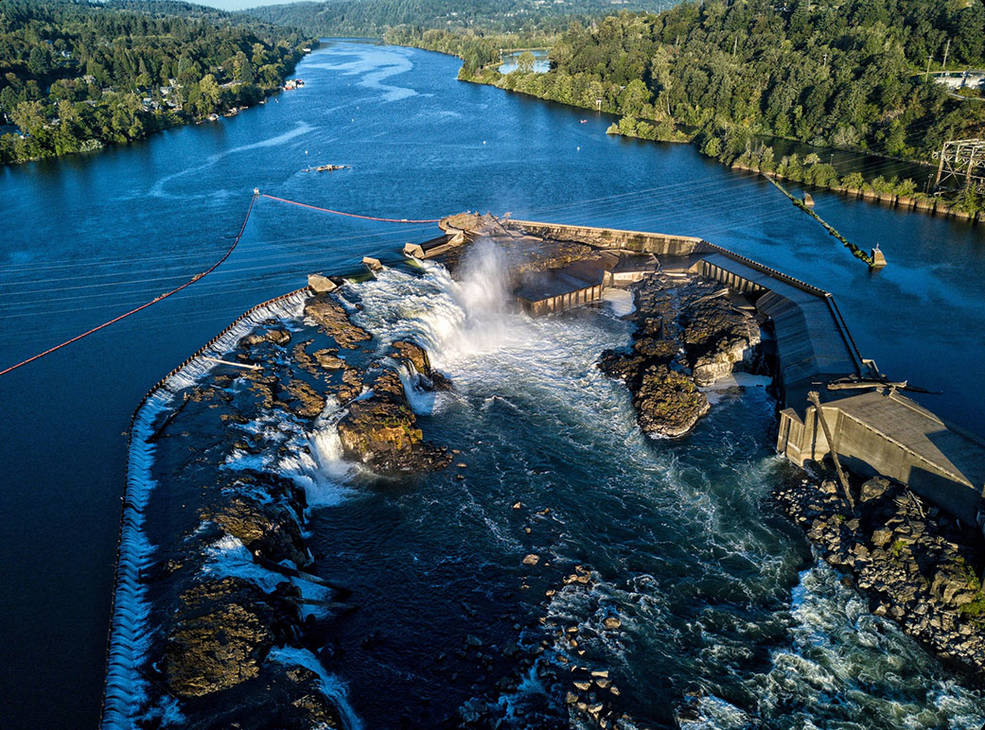US-European Satellite Will Make World’s First Global Freshwater Survey
Water is life, but for all its importance, humanity has a surprisingly limited view of Earth’s freshwater bodies. Researchers have reliable water level measurements for only a few thousand lakes around the world, and little to no data on some of the planet’s important river systems. The upcoming Surface Water and Ocean Topography (SWOT) satellite will fill that enormous gap. By helping to provide a better understanding of Earth’s water cycle, it will both aid in better management of water resources and expand knowledge of how climate change affects lakes, rivers, and reservoirs.
水是生命之源,但尽管它如此重要,人类对地球淡水的认识却令人惊讶地有限。研究人员对世界上只有几千个湖泊有可靠的水位测量数据,对地球上一些重要的河流系统几乎没有数据。即将发射的地表水和海洋地形(SWOT)卫星将填补这一巨大空白。通过帮助更好地理解地球的水循环,它将有助于更好地管理水资源,并扩大对气候变化如何影响湖泊、河流和水库的认识。
A collaboration between NASA and the French space agency Centre National d’Études Spatial (CNES), with contributions from the Canadian Space Agency and the United Kingdom Space Agency, SWOT is scheduled to launch in November from Vandenberg Space Force Base in California. Engineers and technicians are finishing up work on the satellite in a facility run by Thales Alenia Space in Cannes, France.
SWOT是美国国家航空航天局和法国航天局国家d ‘ Études空间中心(CNES)之间的合作,加拿大航天局和英国航天局提供捐助,计划于11月在加利福尼亚州范登堡空间部队基地发射。工程师和技术人员正在法国戛纳泰雷兹阿莱尼亚航天公司运营的设施中完成卫星的工作。
SWOT has several key tasks, including measuring the height of water bodies on Earth’s surface. Over the ocean, the satellite will be able to “see” features like eddies less than 60 miles (100 kilometers) across – smaller than those that previous sea level satellites could observe. SWOT will also measure more than 95% of Earth’s lakes larger than 15 acres (6 hectares) and rivers wider than 330 feet (100 meters) across.
SWOT有几个关键任务,包括测量地球表面水体的高度。在海洋上空,这颗卫星将能够“看到”直径小于60英里(100公里)的涡旋等特征——比以前的海平面卫星所能观测到的涡旋要小。SWOT还将测量超过95%的面积超过15英亩(6公顷)的湖泊和宽度超过330英尺(100米)的河流。
“Current databases maybe have information on a couple thousand lakes around the world,” said Tamlin Pavelsky, the NASA freshwater science lead for SWOT, based at the University of North Carolina, Chapel Hill. “SWOT will push that number to between 2 million and 6 million.”
“目前的数据库可能包含世界各地数千个湖泊的信息,”位于教堂山北卡罗来纳大学的美国宇航局SWOT淡水科学负责人塔姆林·帕维尔斯基(Tamlin Pavelsky)说。“SWOT将把这个数字推到200万到600万之间。”
Along with measuring the water height – whether it be in a lake, river, or reservoir – SWOT will also measure its extent, or surface area. That crucial information will enable scientists to calculate how much water moves through freshwater bodies. “Once you get hold of the volume of water, you can better assess the water budget, or how much water flows into and out of an area,” said Lee-Lueng Fu, SWOT project scientist at NASA’s Jet Propulsion Laboratory in Southern California, which manages the U.S. portion of the mission.
除了测量水的高度——无论是在湖泊、河流还是水库——SWOT还将测量其范围,或表面积。这一关键信息将使科学家能够计算出有多少水流经淡水水体。“一旦你掌握了水量,你就可以更好地评估水资源预算,或者有多少水流入和流出一个地区,”Lee-Lueng Fu说,他是美国宇航局位于南加州的喷气推进实验室的SWOT项目科学家,该实验室负责管理该任务的美国部分。
This is important because climate change is accelerating Earth’s water cycle. Warmer temperatures mean the atmosphere can hold more water (in the form of water vapor), which can cause, for example, rain storms to be stronger than a region might typically see. This, in turn, can wreak havoc on farms, damaging crops. Such accelerating changes can make managing a community’s water resources more difficult.
这一点很重要,因为气候变化正在加速地球的水循环。更高的温度意味着大气可以容纳更多的水(以水蒸气的形式),这可能导致,例如,比一个地区通常可能看到的更强的暴雨。这反过来又会对农场造成严重破坏,破坏农作物。这种加速的变化会使管理社区水资源变得更加困难。
“As Earth’s water cycle intensifies, predicting future extreme events like floods and droughts requires monitoring both changes in water supply from the ocean and water demand and usage on land. SWOT’s global look at all surface water on Earth will give us exactly that,” said Nadya Vinogradova Shiffer, SWOT’s program scientist at NASA Headquarters in Washington.
“随着地球水循环的加剧,预测未来的极端事件,如洪水和干旱,需要监测海洋水供应的变化和陆地水的需求和使用。SWOT对地球所有地表水的全球观察将为我们提供确切的答案,”SWOT在华盛顿NASA总部的项目科学家Nadya Vinogradova Shiffer说。
A Bigger, Better Picture
一个更远大,更美好的未来
SWOT will provide its game-changing data using a new instrument called the Ka-band Radar Interferometer (KaRIn), which bounces radar pulses off the water’s surface and receives the return signal with two antennas at the same time. The antennas are spaced 33 feet (10 meters) apart on a boom, enabling researchers to gather information along a roughly 75-mile-wide (120-kilometer-wide) swath of Earth’s surface – a wider path than that of the satellite’s predecessors.
SWOT将使用一种名为Ka波段雷达干涉仪(KaRIn)的新仪器提供改变自然规则的数据,该仪器将水面上的雷达脉冲反射回来,并用两个天线同时接收返回信号。天线在一个吊杆上间隔33英尺(10米),使研究人员能够沿着大约75英里宽(120公里宽)的地球表面狭长地带收集信息——这比卫星的前身更宽。
The engineering required for this kind of system is tricky because such a large antenna boom requires incredible stability, and because researchers need very precise calculations to produce measurements of Earth’s ocean and freshwater bodies. “The basic idea of SWOT dates back to the late 1990s, but turning that concept into reality – all that engineering – took a huge amount of time and effort,” Pavelsky said.
这种系统所需要的工程是棘手的,因为如此大的天线臂需要难以置信的稳定性,因为研究人员需要非常精确的计算来测量地球上的海洋和淡水水体。“SWOT的基本思想可以追溯到20世纪90年代末,但是把这个概念变成现实——所有的工程——需要大量的时间和精力,”帕维尔斯基说。
Read more at Nasa.gov
在NASA官网上了解更多











